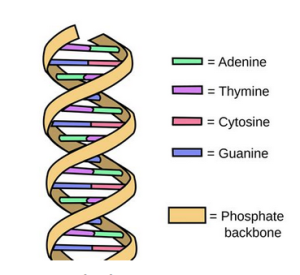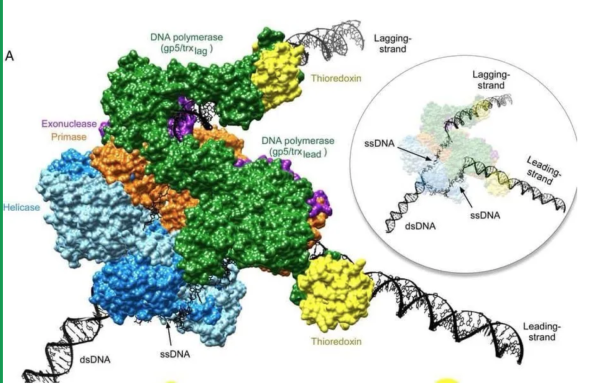Table of Contents
DNA
 Deoxyribonucleic acid is a polymer composed of two polynucleotide chains that coil around each other to form a double helix.
Deoxyribonucleic acid is a polymer composed of two polynucleotide chains that coil around each other to form a double helix.
The polymer carries genetic instructions for the development, functioning, growth and reproduction of all known organisms and many viruses.
DNA and ribonucleic acid are nucleic acids. - Wikipedia
Copying DNA
Dr. Doug Corrigan @ScienceWDrDoug - Twitter1)
(hat tip Naked Emperor Substack fab find)On the 70th anniversary of the discovery of the structure of DNA, I came across this tweet that I found fascinating. Long but worth the read. 2)
Dr. Doug Corrigan…
Every time one of our cells divides into two new cells, the entire genome must be copied. The human genome consists of 3 billion base pairs of information that make up the 6 feet of DNA in each cell. About 50 billion of our 30 trillion cells die every day, and must be replaced. For this to occur, 150 billion billion (150 followed by 12 zeros) pieces of genetic information (“bases”) must be perfectly copied.
The process of copying the DNA into a new strand is a highly orchestrated process that involves the cooperation of dozens of nano-molecular machines which all work in tandem to produce two double stranded molecules of DNA.
DNA consists of two linear strands that are helically wrapped around one another. To copy this DNA, it must first be unwound and the two strands must be separated. Then, protein enzymes read the code of the DNA, and synthesize an exact copy. Both strands of DNA are copied, producing two identical double-stranded molecules of DNA.
The primary actor in the copying process is a molecular machine called DNA polymerase. After the DNA is unwound and separated, this enzyme attaches itself to one of the strands of the DNA and reads its code, base by base. As it reads the identity of each base, it recruits a complementary matching base and attaches it to the new strand, which is the copy. DNA polymerase scans the DNA and incorporates about 1000 bases per second.
DNA polymerase possesses an extraordinarily high copying fidelity, only making on average 1 error in every 10 million bases copied. DNA polymerases also have a proof-reading capability, which imparts them with the amazing ability to recognize when an error has been made, reverse direction, remove the base, incorporate the correct base, and then continue with copying the DNA at full speed.
In addition, there are other protein machines, known as post-replication mismatch repair enzymes, that monitor the DNA for uncaught errors. These enzymes correct the error by cutting the DNA at the site of the error, synthesizing a new strand with the correct sequence, and then gluing the new strand into the template. Together, these copying and correction systems enable replication fidelity of less than one mistake for every billion bases added.
There are many actors involved in the DNA replication process, but some of the major players are-
- Topoisomerase - this machine begins to relax DNA from its supercoiled form.
- DNA Helicase - This protein machine completely unwinds the two strands of DNA. It rotates as fast as the turbine of a jet engine.
- DNA Gyrase - This protein helps to relieve the strain which is induced by unwinding the DNA strand.
- Single Strand Binding Proteins - SSB proteins prevent the two strands of DNA from connecting back together after Helicase unwinds and separates them.
- Primase - this enzyme helps to initiate DNA replication by providing a starting point for DNA polymerase.
- DNA polymerase - there are multiple forms of DNA polymerase, but their collective function is to read the template strand of DNA, synthesize an exact complementary copy base by base, and to correct errors in real time.
- DNA Clamp - this protein prevents DNA polymerase from disconnecting from the DNA as it copies the template strand.
- Telomerase - Adds end-cap sequences to the ends of the DNA strand to maintain its length after copying.
In the image below, you can see a molecular model that shows some of these players and how they are attached to the DNA during replication.

If that wasn’t already mind blowing enough, here’s the real kicker - The information to build every single one of these molecular machines is in the DNA that’s being copied by these machines.
The machines are making copies of their own blueprints, so that more machines can be built to copy more DNA blueprints. I don’t know of a more profound chicken or egg scenario than this one.
This description of DNA replication is ridiculously simplified and wholly inadequate.